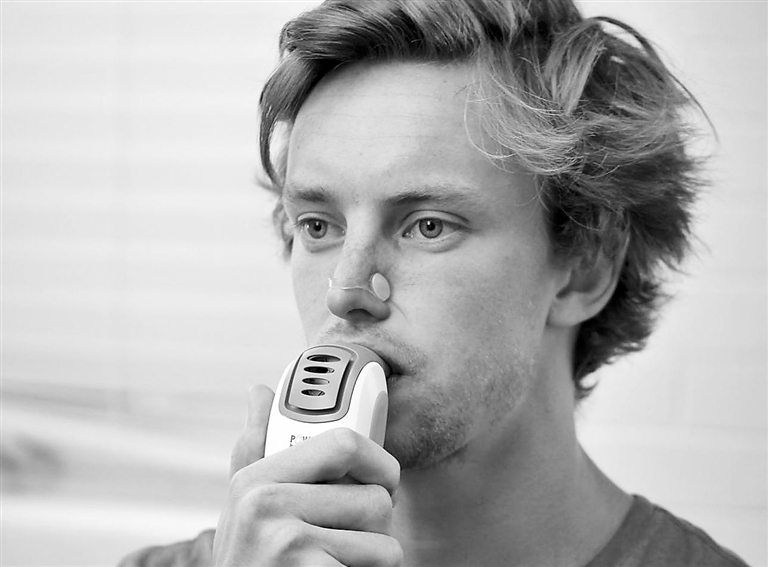
WORKING out just five minutes daily via a practice described as “strength training for your breathing muscles” lowers blood pressure and improves some measures of vascular health as well as, or even more than, aerobic exercise or medication, new University of Colorado Boulder research shows. The study, published in the Journal of the American Heart Association, provides the strongest evidence yet that the ultra-time-efficient maneuver known as High-Resistance Inspiratory Muscle Strength Training (IMST) could play a key role in helping aging adults fend off cardiovascular disease. “There are a lot of lifestyle strategies that we know can help people maintain cardiovascular health as they age. But the reality is, they take a lot of time and effort and can be expensive and hard for some people to access,” said lead author Daniel Craighead, an assistant research professor in the Department of Integrative Physiology. “IMST can be done in five minutes in your own home while you watch TV.” Developed in the 1980s as a way to help critically ill respiratory disease patients strengthen their diaphragm and other inspiratory (breathing) muscles, IMST involves inhaling vigorously through a hand-held device which provides resistance. Imagine sucking hard through a tube that sucks back. Initially, when prescribing it for breathing disorders, doctors recommended a 30-minute-per-day regimen at low resistance. But in recent years, Craighead and colleagues have been testing whether a more time-efficient protocol — 30 inhalations per day at high resistance, six days per week — could also reap cardiovascular, cognitive and sports performance improvements. For the new study, they recruited 36 otherwise healthy adults ages 50 to 79 with above normal systolic blood pressure (120 millimeters of mercury or higher). Half did High-Resistance IMST for six weeks and half did a placebo protocol in which the resistance was much lower. After six weeks, the IMST group saw their systolic blood pressure (the top number) dip nine points on average, a reduction which generally exceeds that achieved by walking 30 minutes a day five days a week. That decline is also equal to the effects of some blood pressure-lowering drug regimens. Even six weeks after they quit doing IMST, the IMST group maintained most of that improvement. “We found that not only is it more time-efficient than traditional exercise programs, the benefits may be longer lasting,” Craighead said. The treatment group also saw a 45 percent improvement in vascular endothelial function, or the ability for arteries to expand upon stimulation, and a significant increase in levels of nitric oxide, a molecule key for dilating arteries and preventing plaque buildup. Nitric oxide levels naturally decline with age. Markers of inflammation and oxidative stress, which can also boost heart attack risk, were significantly lower after people did IMST. Preliminary results suggest MST also improved some measures of brain function and physical fitness. And previous studies from other researchers have shown it can be useful for improving sports performance.(SD-Agencies) | 
